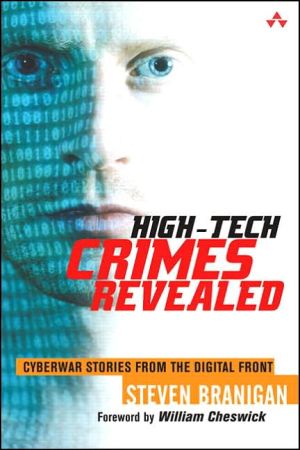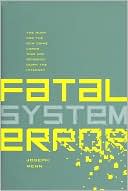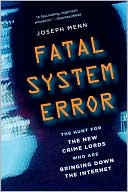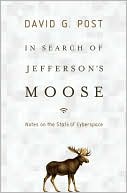High-Tech Crimes Revealed: Cyberwar Stories from the Digital Front
Stories about hacking, stolen credit card numbers, computer viruses, and identity theft are all around us, but what do they really mean to us? The goal of this book, quite simply, is to help educate people on the issues with high-tech crimes.\ High-Tech Crimes Revealed: Cyberwar Stories from the Digital Front demystifies the risks and realities of high-tech crimes. Demystifying these crimes and raising the awareness of users of technology will make people smarter and safer, and that will make...
Search in google:
With a target audience of computer security and other information technology professionals, Branigan (president, CyanLine LLC) focuses on the people more than the technology in his discussion of cybercrime and its investigation. He describes cases he's been involved with, some as a law enforcement officer, in order to give professionals an idea of how criminals exploit computer weaknesses and what can be done to catch them. After describing such episodes as an attack on a telephone network, an attack on an ISP, and a case of identity theft, he proceeds to a more general discussion of cybercrime, exploring such questions as why hackers hack and the proper conduct of criminal investigation. Annotation ©2004 Book News, Inc., Portland, OR
\ Appendix A\ \ Steven Branigan Normal End User 2 2000-10-24T22:22:00Z 2004-04-27T21:41:00Z 2004-04-27T21:41:00Z 3 885 5049 sb 42 10 6200 9.3220\ 0 0\ High-Tech Crimes Revealed:Cyberwar Stories from the DigitalFront\ by StevenBranigan\ Preface\ “Give a man a fish, you'llfeed him for a day.\ Teach a man to fish, you won't haveto listen to his incessant whining about how hungry he is.”\ - Author unknown\ Stories about hacking, stolen credit card numbers,computer viruses and identity theft are all around us, but what do they reallymean to us? The goal of this book, quite simply, is to help educate people onthe issues with high-tech crimes, to help answer that question. Just as thequote above teaches us, let’s not just talk about these issues,let’s understand them.\ There are many fine books on the market that explainhow hackers exploit computer and networks. They explain the details of theexploits and methods to protect against them, and as such are targeted forthose with strong technical knowledge. That is not the case here. You will notlearn the intricacies of the latest hacking attack. You will learn how hackersuse these exploits, why they use them and in some cases how they get caught.\ Basically high tech crimes are just a mixture ofregular crimes like theft, fraud, and revenge attacks using new techniques. So,the concepts should be very easy to understand. Because of the subject nature,there are some technological references in these cases. Don't worry if youdon't understand all the technicalities, they are there to make the storiesricher for more technicallyexperienced readers.\ We like technology because it makes our lives easier,but unfortunately it also makes the lives of criminals easier. Sadly, mostusers of high technology are not really aware that high-tech crimes mightaffect them and that is a problem. While many of these stories have beenreported in the media, very little time has been spent on explaining how thesecrimes might affect us. Demystifying these crimes and raising the awareness tousers of technology will make people smarter and safer users and that will makeall of us safer in the long run.\ With my background as a sworn law-enforcement officer(cop), system administrator (geek), computer programmer (geek), Internetsecurity consultant (geek with tie) and network security researcher (geek inshorts), I offer a unique perspective to help people better understand the manyissues with high-tech crime and how they might be affected. What follows aresome of the high-tech cases I have personally been involved with over the yearsalong with the details of how the problems were discovered and how the caseswere eventually resolved. All of the cases that follow are real. Since not allof the cases resulted in convictions, you will notice that I have taken theliberty of changing the names of the players, to protect the guilty as well asthe innocent.\ The reader will get a great perspective on howhigh-tech crimes are investigated and will notice that in many ways thesecrimes are very similar to the traditional investigations. After all, one thingthat both high tech and low tech crimes have in common is that both are committedby criminals.\ Eachcase has created the framework from which law enforcement now operates, as wellas provided a platform of awareness to help other companies and individualsfrom being victimized. A lot has changed over the past decade. Terms like computerviruses, broadband Internet, hacked web-sites and Identity theft are phrasesthat weren’t very well known to the general public just 10 short yearsago. They sure are now.\ No prior technical experience is necessary in order tounderstand the issues involved with each case. Primarily the stories focus onthe people, and the use and abuse of technology plays a minor supporting role.In the first 4 chapters, we will walk through hacker investigations, pointingout how hackers were causing damage, pointing out the potential additionaldamage that could be caused and how they were tracked and caught. Chapter 5starts with an introductory story on identity theft and is followed with manyissues about this growing crime.\ For the next two chapters, I draw upon my experiencein interviewing hackers. Chapter 6 details the conversations and the lessonslearned. The next one, Chapter 7, is where I put forth a theory on whatmotivates hackers to do what they do, drawing upon lessons from criminology,psychology and personal observation. Here, the hope is that by a betterunderstanding of what makes a hacker hack, we can do early detection or evenprevention on certain high-tech crimes.\ The next 2 chapters explain some of the technologiesthat we encountered in the previous chapters in more detail. This is where Ican better explain the potential risks associated with technologies.\ Chapter 10 and 11 explain what works as well as whatdoes not work in high-tech crime investigations. Chapter 10 uses small caseswhere mistakes led to failed investigations to highlight what can go wrongduring a high-tech investigation. Even though discussing all the things that can go wrong is a great way to learn, Chapter 11 focuses on how to avoid the mistakes inthe first place.\ Finally, the concluding chapter pulls it all together,so that the reader is aware of the issues surrounding high tech crimes.\ One important note that I want to share. I startedthis book in 1999 and by mid 2001 I was finally making some very good progress.I felt like I would have been done by the beginning of 2002. Then, after theevents of Sept. 11, I found it hard to continue. While I was fortunate in thefact that I did not lose any family or close friends in the attack, some of myfriends were not so fortunate. In addition, the towers complex was an area thatwas a second home for me, as I spent a lot of time in 7WTC. I even had myfavorite parking spot that always impressed Ches. It was time to help ourfriends that needed us.\ \ I took me the better part of a year to finally getpast the grieving and get back to work. You’ll see some of those thoughtshave weaved their way into Chapter 3. Please, let us never forget those who welost that tragic day. I know that I never will…\
Ch. 1An attack on the telephone network1Ch. 2An attack on an ISP35Ch. 3If he had just paid the rent73Ch. 4Inside a hacker sting operation ...99Ch. 5Identity theft123Ch. 6Let's ask the hackers ...165Ch. 7Why do hackers hack?193Ch. 8Setting the stage225Ch. 9High-tech crime267Ch. 10What not to do309Ch. 11How to run a high-tech case333Ch. 12What have we learned357
\ From Barnes & NobleThe Barnes & Noble Review\ Steven Branigan was investigating cybercrime long before most folks knew it existed. In this book, he takes you inside several of those investigations, offering important insights into what drives the perpetrators and essential lessons about how they can be brought to justice. \ Branigan’s cases range from attacks on telephone networks to ISPs. He also takes you behind the scenes at a classic sting operation that involved “turning” a hacker and using him to penetrate the inner circle of a criminal ring. Most useful to both corporate security specialists and professional law enforcement: Branigan’s guidance on high-tech forensic techniques and the complex legal processes associated with building a case that’ll stand up in court. Bill Camarda\ Bill Camarda is a consultant, writer, and web/multimedia content developer. His 15 books include Special Edition Using Word 2003 and Upgrading & Fixing Networks for Dummies, Second Edition.\ \ \








